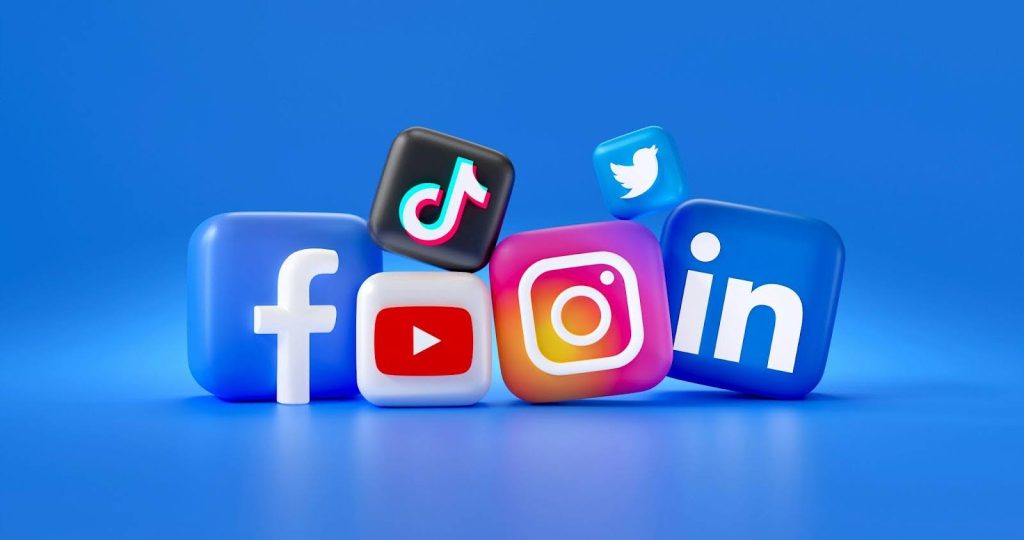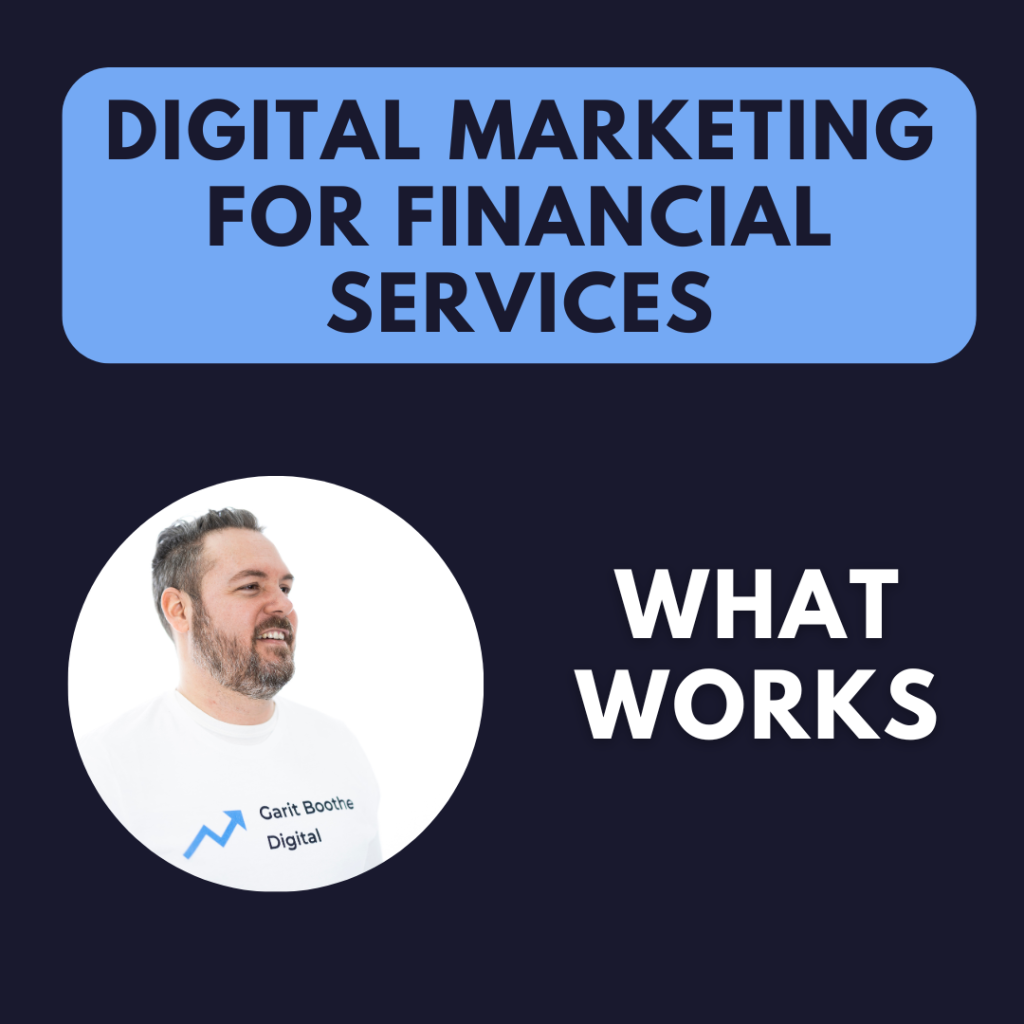A banks marketing strategy makes or breaks its success.
I walk you through some of the key elements of a successful marketing strategy that will help you distinguish yourself from the competition and see returns from your bank marketing efforts.
Branding

Branding is everything in marketing.
If I see an apple with a bite taken out of it, I immediately think of Apple and its products.
When I see two golden arches on the road, I think of McDonald’s and all the food they sell.
If I see a red circle with a dot in the center, I think of Target.
Branding is powerful. It evokes certain feelings, associations, and has the ability to ensure that your bank is instantly recognized by logo, color, or sound alone.
One major focus of a banks marketing strategy should be branding.
Big banks, while well-known in the banking industry, don’t always have the best branding. As a small or mid-size bank, you can take advantage of this and create a financial brand that leaves a lasting impact.
What does branding encompass? As you work on branding, you want to focus on your bank’s:
- Name: What is the name of your bank? What does it mean? What kind of associations does it prompt among customers, and is it something that they find catchy and easy to say?
- Logo: A logo is a visual representation of your financial institution, and it’s something that immediately tells people who you are and what to expect. Take time creating a logo that will be a part of your brand’s identity.
- Colors: Colors are a big part of logos, physical bank design, and beyond. Colors can be chosen for their reported psychological effects, for associations with products or services your bank offers, or for other reasons.
- Online and Physical Presence: What will your website look like? What will your physical bank locations look like? Your online and physical presence can impact how customers perceive you and whether they choose your bank’s products and services.
- Niche: Do you want to operate in a specific niche? Being a niche bank can sometimes be more effective than offering all the banking services customers might want, especially if you’re offering products or financial services that aren’t as widely available.
- Mission and Culture: Your mission and culture dictate how customers perceive you. Are you focused on serving certain communities? Are you known for your helpful customer service and dedication to customer experience?
Product Offering and Positioning
Your bank’s identity needs to be aligned with your marketing.
Let’s say, for example, that you want to be a rural bank. A rural bank isn’t going to be marketing a wide range of financial products that aren’t relevant to its ideal customer base.
Instead, they’re going to be focused on offering specific products, like agricultural loans, ag checking and savings accounts, and farm or agricultural insurance that are relevant to new customers.
If you’re a bank catering to small businesses, you’re going to offer small business loans, business credit cards, and business checking accounts. Meanwhile, you’ll be offering larger solutions if you’re involved in investment banking.
If you’re a consumer-focused local bank, your offerings might be broader to meet more comprehensive customer needs. You might offer credit cards, mortgages, auto loans, and other traditional banking products.
Once you figure out what your bank is and what it’s selling, the next step is to position it that way for effective marketing.
Feature it prominently on your homepage copy, make sure that your drop-down menus make it easy for customers to find the products that are relevant to them, and include these services in various marketing materials to establish your bank’s identity and attract the right customers.
Niche Product Marketing

Chime is an excellent example of niche product marketing done right.
Your bank may offer a product or financial service that is not so prominent among traditional banks or aligned with the most common needs of modern consumers.
This is where niche product marketing comes in. Niche marketing is an approach in which you market a specialized product to a specific group of consumers in need of said niche product.
My favorite example of niche product marketing is Chime.
Chime is a financial institution that offers a range of financial solutions primarily targeted at younger demographics. This shows in their fee-free banking accounts, early payday features, and credit-management solutions.
They have a recognizable brand, a well-designed website, imagery and copy that cater to young adults who are new to navigating the financial world, and niche products that they will want.
Whether you have a feature-rich online/mobile banking app, niche mortgage offerings, or business loans designed for specific business types (like restaurants), figure out what other niche banks are doing right and emulate that in your own bank marketing strategy.
SEO

What people see when they search for “banks.”
A bank’s marketing strategy isn’t complete without SEO.
Search engine optimization is what helps to generate traffic to your bank’s website, boosting online visibility and allowing you to convert leads into paying customers.
For many small to mid-size banks, the first focus in bank marketing is local SEO. Creating a Google Business Profile will allow you to rank on the Google Map Pack, boosting you to the top of SERPs. This is important, as the Google Map Pack receives around 40% of clicks on SERPs.
A Google Business Profile is fairly easy to optimize. So long as you’re providing correct information, using high-quality images, receiving reviews, and focusing on customer engagement, you can rank.
Local SEO for banks also extends into traditional SERPs. Even beyond the Google Map Pack, rankings matter. Local results will show up when you scroll down.
I focus on long-tail keywords for both bank branch locations as well as products to make sure that you appear to potential customers in your area. Then, I create a content marketing plan that features one page per keyword. Content marketing will help you rank on organic search.
Beyond local SEO and content marketing in your bank marketing strategy, banks need to focus on technical SEO as well as link building and outreach.
Technical SEO involves elements of your website like optimized metadata, site speed, layout, and schema markup.
Meanwhile, link building and outreach entail reaching out to various websites in order to get backlinks, which boost your authority and trustworthiness in Google’s eyes.
All of these components are required for an effective marketing strategy.
If you’re looking for a marketing agency for banks that can support you with your bank’s SEO strategy, book a discovery call with GB Digital to see real results in your digital marketing strategy.
Reviews
Reviews are important for a number of reasons.
Speaking to their impact on SEO, reviews are important when you’re aiming to rank on the Google Map Pack. Having detailed reviews can help you boost your online visibility significantly. Keep this in mind when tuning your digital marketing strategies.
But beyond that, reviews are necessary for establishing trust with new customers.
Very few people are going to want to do business with a bank they’re unfamiliar with that has a limited reputation. This is especially true given that they likely have a number of alternative options that they could consider instead.
Your online and offline reputation is everything. When you encourage new customers to leave reviews about their customer experience with your bank, it helps you cultivate social proof, proof that you’ll then use to encourage more people to use your bank’s products or services.
Reviews can be an invaluable tool in a bank’s marketing strategies, especially when they prove time and time again that they’re one of the top banks for certain products or services in their area.
Advertising
Choosing your bank marketing channels can be a challenge. The key to advertising efficiently is to determine which channels are going to be the right fit for your bank and its products or services.
Google ads, while cost-prohibitive, could be the best choice for you if you’re launching your bank or a new product or service. You can incorporate this in your bank marketing strategy during key events.
If you want to appear at the top of SERPs quickly, paid search is an option that can help you market your bank quite effectively. That is, so long as these ads are properly optimized so that you’re appearing to the right customers.
It’s also important not to disregard the power of physical marketing. Since you will be looking to bring in customers who live close to your branches, investing in a billboard could be a great way to reach those in the surrounding areas.
Tailor your bank marketing strategies to the type of advertising you’re doing to get the best results and avoid wasting money on channels and strategies that won’t bolster your bank.
Other Digital Marketing Tactics

Social media marketing is one digital marketing tactic to generate buzz and create awareness.
You’re not limited to the traditional marketing channels when you’re marketing your bank.
The modern era brings with it a wealth of opportunities in the marketing department. (Of course, you probably already know many of these digital advertising strategies.)
One way to market your bank is through email marketing.
The efficacy of an email marketing campaign is dependent upon a wide range of factors. That being said, the average ROI for an email marketing campaign is $36 for every $1 spent. That’s a strong return that will help you grow your bank effectively.
Another option is through social media marketing. It can be difficult to quantify ROI for social media marketing because its effectiveness can vary dramatically depending on the channel used (and whether it’s being leveraged by a financial institution correctly).
Influencer marketing might be another option worth considering, although it might not be suitable for every bank. It depends on what options they have at their disposal or who their brand caters to.
One recommendation I see frequently is that you will need a CRM for your digital marketing tactics. This isn’t necessary unless you have a large sales team.
Community Relationships
Small to mid-size banks are going to rely strongly on the surrounding community for their business.
As such, developing community relationships in financial marketing is important for a community bank. This could look like attending networking events, getting involved in your city’s chamber of commerce, or otherwise engaging with the community.
These community relationships can go a long way in supporting your bank.
You might also consider looking into ways you can become more involved in the community. Community banks will sometimes get involved in local goings-on to foster customer relationships and customer loyalty.
Funding events or participating in other ways will promote a positive image and reputation, which will have a lasting impact on your brand. It will support them outside of what they might expect during their customer experience.
Find strategic ways to develop relationships in your community that will further your bank marketing efforts and develop brand awareness.
Business Development
I have a friend who does business development for Silicon Valley Bank, primarily focusing on high-value B2B customers.
He uses many of the above banking marketing tactics to do business, developing relationships that will allow him to land high-value B2B customers.
If this is something your bank aims to specialize in, using these traditional bank marketing tactics could prove quite useful in your approach to growing your bank, getting word of it out there, and improving customer acquisition.
Work with Garit Boothe Digital: Bank Marketing Experts
Garit Boothe Digital is your bank marketing expert, here to support your bank, grow your online visibility, and help you see profitability.
Book your discovery call with us today to get started!




